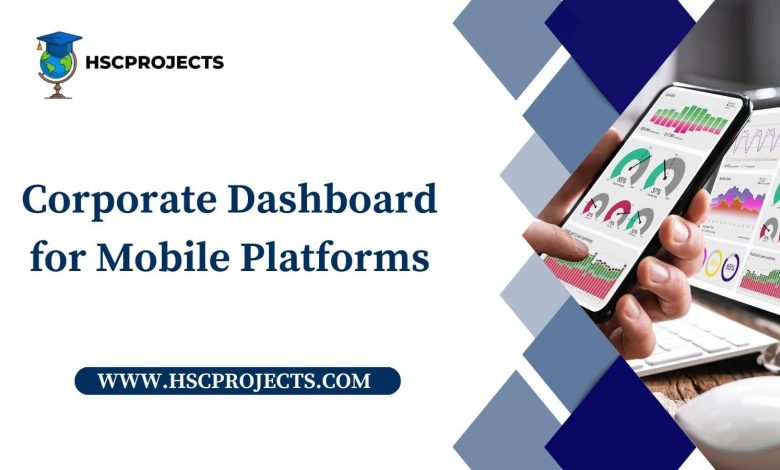
Corporate Dashboard for Mobile Platforms
Introduction
In a digitally connected era where smartphones have surpassed desktops, creating a mobile-responsive corporate dashboard is no longer optional—it’s a necessity. This article explores how to build an efficient corporate dashboard designed for mobile platforms.

Why Go Mobile?
The rising popularity of smartphones has made mobile platforms the go-to place for quick and easy access to information. A mobile-responsive corporate dashboard allows stakeholders to make data-driven decisions on the go, staying ahead in the fast-paced business world.
Key Modules for Your Dashboard
A well-designed corporate dashboard consists of essential modules that offer a complete snapshot of your business:
- Home: The landing page that provides an overview of your company.
- About: A section detailing the formation of the company, board of directors, and other relevant information.
- Gallery: A showcase of your company’s products or services.
- Contact: A section providing all contact details for the company.
- More Links: Space for any additional resources or links that could be beneficial for stakeholders.
Technology Stack
The technology involved in creating a mobile-responsive dashboard includes:
- HTML5: For structuring your dashboard’s content.
- JQuery Mobile: For enhancing the mobile user experience.
- PhoneGap (Optional): To convert your web application into a native mobile application.
Building Your Dashboard
It’s vital to focus on a clean UI/UX, ensuring that the dashboard is as intuitive as possible. Implement features like interactive graphs, real-time updates, and secure authentication protocols. Make sure the dashboard is accessible across all HTML5 supported mobile browsers for maximum reach.
Conclusion
A corporate dashboard is an essential tool in today’s mobile-centric world. It not only serves as a valuable resource for your team but also as a functional tool that can aid in quick decision-making. By focusing on the key modules and selecting the right technology stack, you can create an effective and user-friendly mobile corporate dashboard.
Sample Code
HTML File (index.html)
<!DOCTYPE html>
<html>
<head>
<title>Corporate Dashboard</title>
<meta name="viewport" content="width=device-width, initial-scale=1">
<link rel="stylesheet" href="styles.css">
<script src="https://code.jquery.com/jquery-3.6.0.min.js"></script>
</head>
<body>
<div id="navbar">
<a href="#home">Home</a>
<a href="#about">About</a>
<a href="#gallery">Gallery</a>
<a href="#contact">Contact</a>
<a href="#morelinks">More Links</a>
</div>
<div id="home" class="section">
<h1>Home</h1>
<p>This is general information about the Company.</p>
</div>
<div id="about" class="section">
<h1>About</h1>
<p>This consists of Company’s formation, board of directors, and other information.</p>
</div>
<div id="gallery" class="section">
<h1>Gallery</h1>
<p>This consists of all the products of the company.</p>
</div>
<div id="contact" class="section">
<h1>Contact</h1>
<p>This consists of all the contact details of the company.</p>
</div>
<div id="morelinks" class="section">
<h1>More Links</h1>
<p>Any additional links.</p>
</div>
<script src="script.js"></script>
</body>
</html>
CSS File (styles.css)
body {
font-family: Arial, sans-serif;
margin: 0;
padding: 0;
}
#navbar {
background-color: #333;
overflow: hidden;
}
#navbar a {
float: left;
display: block;
color: white;
text-align: center;
padding: 14px 16px;
text-decoration: none;
}
.section {
padding: 20px;
text-align: center;
}
JavaScript File (script.js)
$(document).ready(function() {
// Add smooth scrolling to all links in navbar
$("#navbar a").on('click', function(event) {
if (this.hash !== "") {
event.preventDefault();
var hash = this.hash;
$('html, body').animate({
scrollTop: $(hash).offset().top
}, 800, function(){
window.location.hash = hash;
});
}
});
});
In order to download the PDF, You must follow on Youtube. Once done, Click on Submit
Follow On YoutubeSubscribed? Click on Confirm
Download Corporate Dashboard for Mobile Platforms PDF






